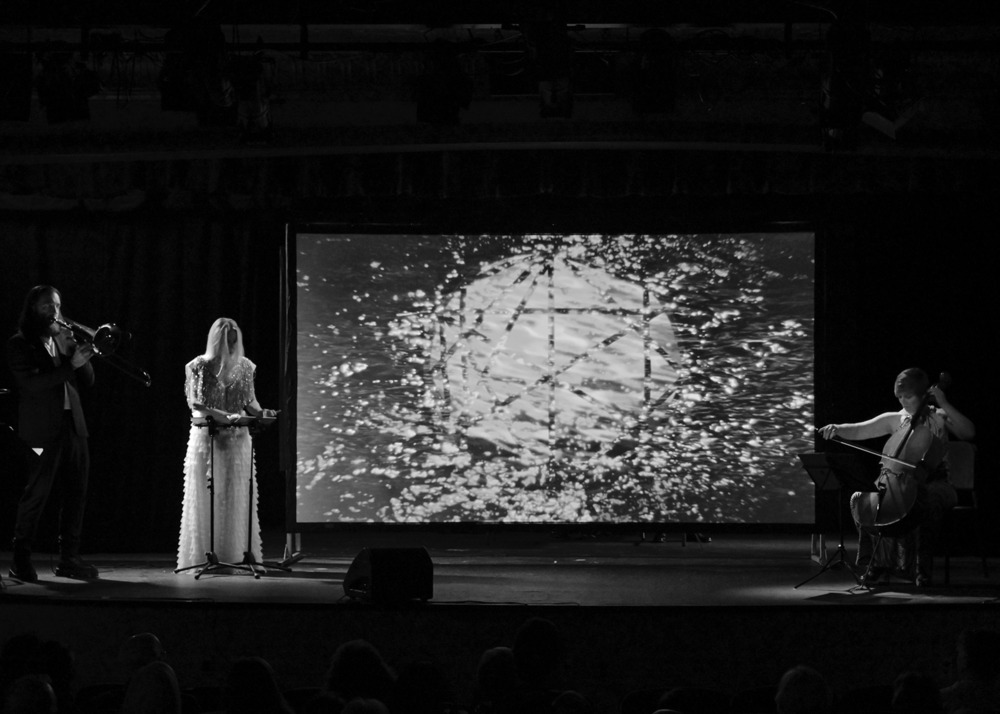
MEM MER MÈRE
first performed on November 13, 2019
The Cultural Center at the Opera House, Havre de Grace, MD
performed twice in 2019
L’ARTISTE ORDINAIRE (MELISSA GREY / DAVID MORNEAU)
Kate Dillingham, Marc Fiaux, Dr. Bhawani Venkataraman
New York, NY
513467348l513467348.513467348a513467348o513467348@513467348a513467348r513467348t513467348i513467348s513467348t513467348e513467348o513467348r513467348d513467348i513467348n513467348a513467348i513467348r513467348e513467348.513467348o513467348r513467348g
artisteordinaire.org/mmm/
MEM MER MÈRE
L’ARTISTE ORDINAIRE (MELISSA GREY / DAVID MORNEAU)
“mem mer mère” uses sound and performance to examine humanity’s collective neglect and wanton exploitation of the World Ocean. The driving questions: How do we create art responsibly in the face of climate change and ecosystem collapse? Is it possible to advocate without devolving into propaganda? Is it enough to make art in the pursuit of awareness? Marine biologist Sylvia Earle names ignorance as the “single most frightening and dangerous threat to the health of the oceans.” She suggests that “with knowing will come caring, and with caring, an impetus toward the needed sea change of attitude, one that combines the wisdom of science and sensitivity of art to create an enduring ethic.”
“mem mer mère” transforms eight measures of Claude Debussy’s “La mer” (1905) into one giant slow-motion wave. In the performance, Kate Dillingham’s cello and David Morneau’s trombone incanted the sea using fragments of “La mer” while Melissa Grey interwove them through layers of shimmering live sound processing that conjured the ocean. Marc Fiaux processed video of the ocean’s surface to create live visual accompaniment for the music.
The performance integrated scientific wisdom from two sources. As introduction, a recording of Dr. Bhawani Venkataraman reading key passages from her essay, “The True Price of Water,” was played to provide context and intention. Throughout the 60-minute performance, a roll call reading of the ocean’s dead zones played like a voice from the future. We applied a data sonification process to alter the recording of each place name based on its decade of discovery. A joint research project of Dr. Robert Diaz (Professor Emeritus, Virginia Institute of Marine Science) & Dr. Rutger Rosenberg (Professor, Department of Marine Ecology, University of Gothenburg) compiled the list of known dead zones that we were generously allowed to use.
Human pollution adds significant levels of nitrogen and phosphorus to coastal waters, causing dead zones. The mass accumulation of these nutrients in the water can result in diminished levels of dissolved oxygen. Water becomes hypoxic, creating dead zones. Each decade since the 1960s has seen a doubling of the number of dead zones in the world’s waters. The contrast between the shimmering music and this alarming list of locations functioned as a metaphor for the sun glitter on the ocean’s surface that obscures its depths from view.